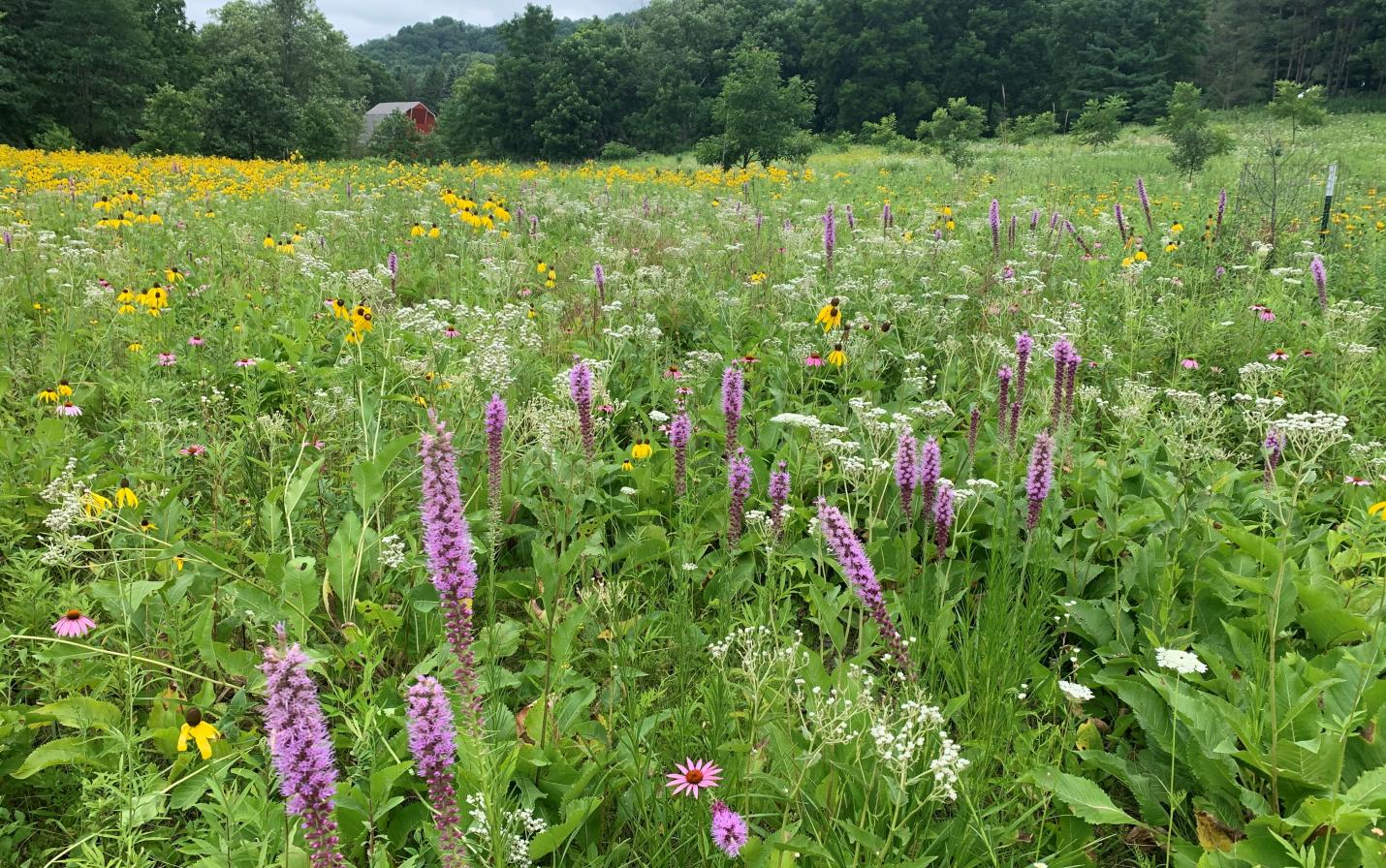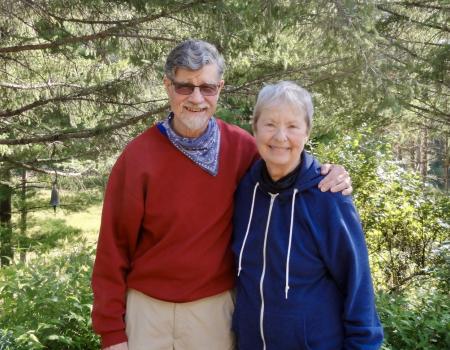
VIOLA, WI – When John and Rita Hoffmann purchased their Richland County farm in 1998, they knew they had a lot to learn about managing its natural resources. They had visited the area several times, and they enjoyed the friendly communities of the Kickapoo River Valley, the bucolic winding roads of the Driftless Area, and the prevalence of freshwater resources. With their purchase of a 60-acre property that’s tucked halfway up a little valley just outside of Viola, their land stewardship learning journey began. Nearly twenty-five years later, on December 30, 2021, they entered into a conservation agreement with Mississippi Valley Conservancy to permanently protect the property and all they’ve put into it. With the Hoffmann agreement, the Conservancy reached a new milestone, with more than 22,000 acres of native habitats and farmlands permanently protected in Wisconsin’s Driftless Area.
Before the Hoffmanns purchased the land, several areas had been pastured and some trees had been harvested from the woods. But the steep hillsides, bluffs, and ravines had protected the majority of their wooded acres from pasturing and lumbering due to difficult access. John and Rita have restored and managed their property for decades, and their decision to protect it with a conservation easement ensures that the wildlife habitats they’ve nurtured will remain undisturbed by future subdivisions, unsustainable farming, or mining.
“Climate change models have noted that lands that are biologically diverse, have steep topography, cold-water resources, and perennial cover are more resilient to the effects of extreme weather,” said Chris Kirkpatrick, the Conservancy’s conservation specialist. “The Hoffmann property is a prime example of land being managed for biodiversity, and this conservation easement will ensure the property will be resilient into the future.”
In crafting the conservation easement with the Conservancy, the Hoffmanns were able to define a building area where a future home or other structure could be added, should they decide to expand living space on the property. “No two conservation easements are alike,” said Kirkpatrick. “The landowner’s vision for their use of the land is a major factor in the shaping of the agreement and the owner’s plans to maintain the property.”
The land has many features, including a cold-water creek that meanders through the property with sedge meadows on both sides. Over the years, John and Rita have planted a diverse prairie along the creek, and they are in the process of reconstructing another two prairies. They’ve also planted several acres with three varieties of native oak and other hardwood tree species.
Their property includes a scenic forested ridgeline that overlooks the Kickapoo River Valley just half a mile to the west. Along the ridge are sandstone cliffs surrounded by oak woodland, and a diversity of forest types cover much of the rest of the property. The Kickapoo River Valley is a priority area for the Conservancy, with its collection of cold-water resources, rare habitats for a variety of wildlife, and scenic vistas.
“Our transition from the big city to the country has been a very enjoyable one,” said John. “Thankfully, our learning curve for managing hardwoods and native prairies has been aided and shaped by many landowners and conservation organizations who’ve generously shared their knowledge and experience with us.” John and Rita have been members of the Wisconsin Woodland Owners Association (WWOA) since 1998, and John has served as the secretary and vice president of the WWOA Bad Axe Chapter board of directors. They are also members of the Wisconsin Walnut Council, The Prairie Enthusiasts, Valley Stewardship Network, Mississippi Valley Conservancy, Friends of the Kickapoo Valley Reserve, Wisconsin’s Green Fire, and the American Forest Foundation.
John and Rita say they’ve also learned a great deal about water quality. Having a private well has heightened their appreciation of water quality and the nature of the Driftless Area’s fragile karst geology. “If you really understand it, you can’t ignore it,” Rita said. “We were fortunate to become more knowledgeable about the critical importance of conservation.
We hope our efforts will inspire other area landowners to utilize local nonprofit and state organizations to assist them in achieving their land preservation goals.”
The conservation easement doesn’t change their status as legal owners of the property, but John and Rita agree that their thinking about land “ownership” has changed over time as a result of their forestry and prairie education. They now think of themselves not as “land-owners” but rather as temporary stewards who have a responsibility to protect and enhance the quality of a very diverse landscape with many life forms. They see how their lives and those of future generations are totally linked to recognizing and protecting these vital connections. Said John, “We believe that the Conservancy is a uniquely qualified organization to help us achieve our long-term goals of environmental land preservation.”
The Hoffmanns’ affection for their property has many reasons, including the natural beauty of the Driftless landscape and the seasonal changes they see from a bird’s-eye view through the treetops. Said John, “We view our land as a part of a larger mosaic within the Driftless Area and as a home and refuge for many diminishing native plant, wildlife, and fungal species. The conservation easement will further our goal to protect what is still here for future generations. Our investment of time and resources in projects has increased our attachment to the land and our appreciation for the diversity of species that reside here. We enjoy sharing all this natural beauty and gifts with relatives, friends, and conservation colleagues.”
